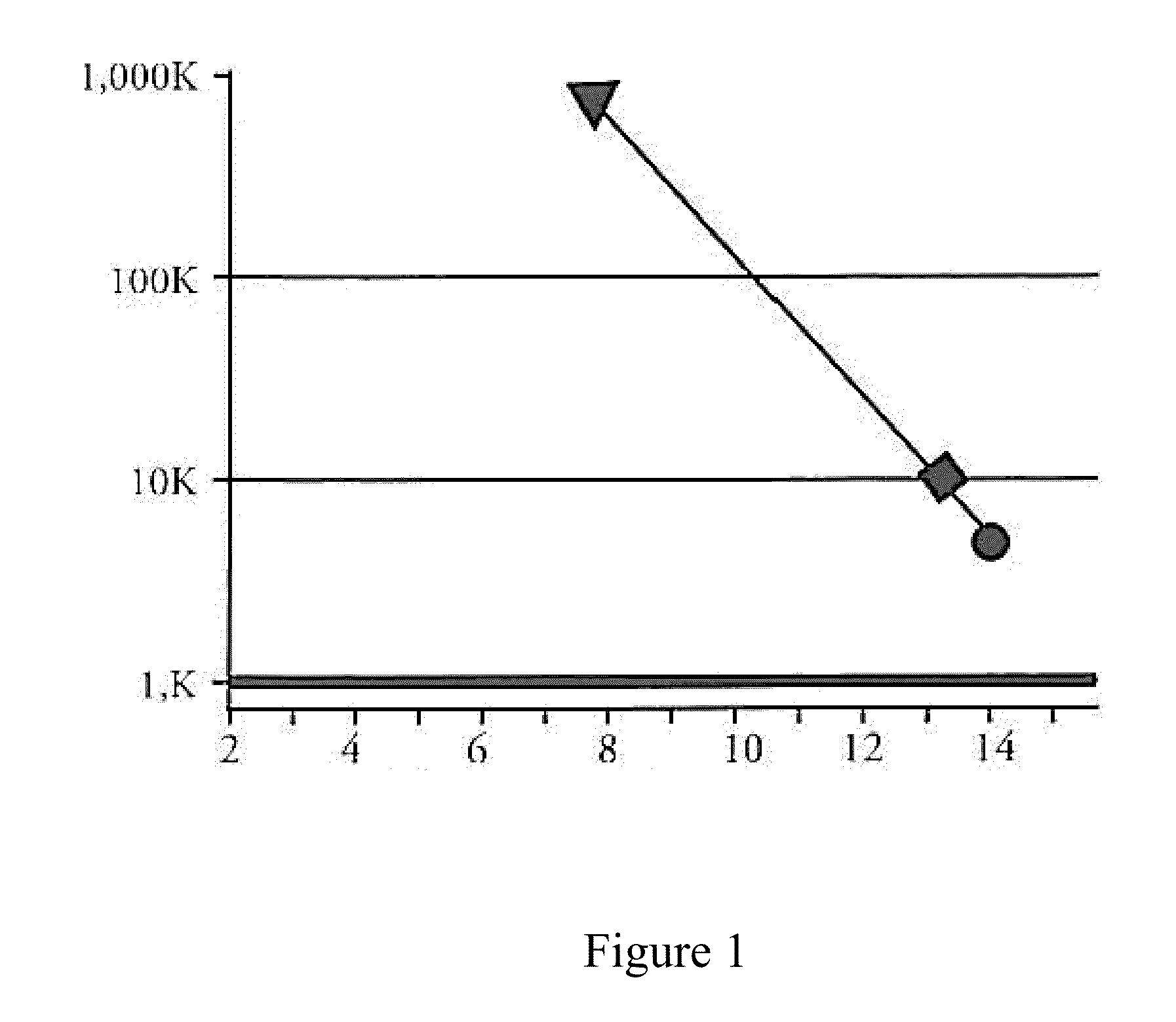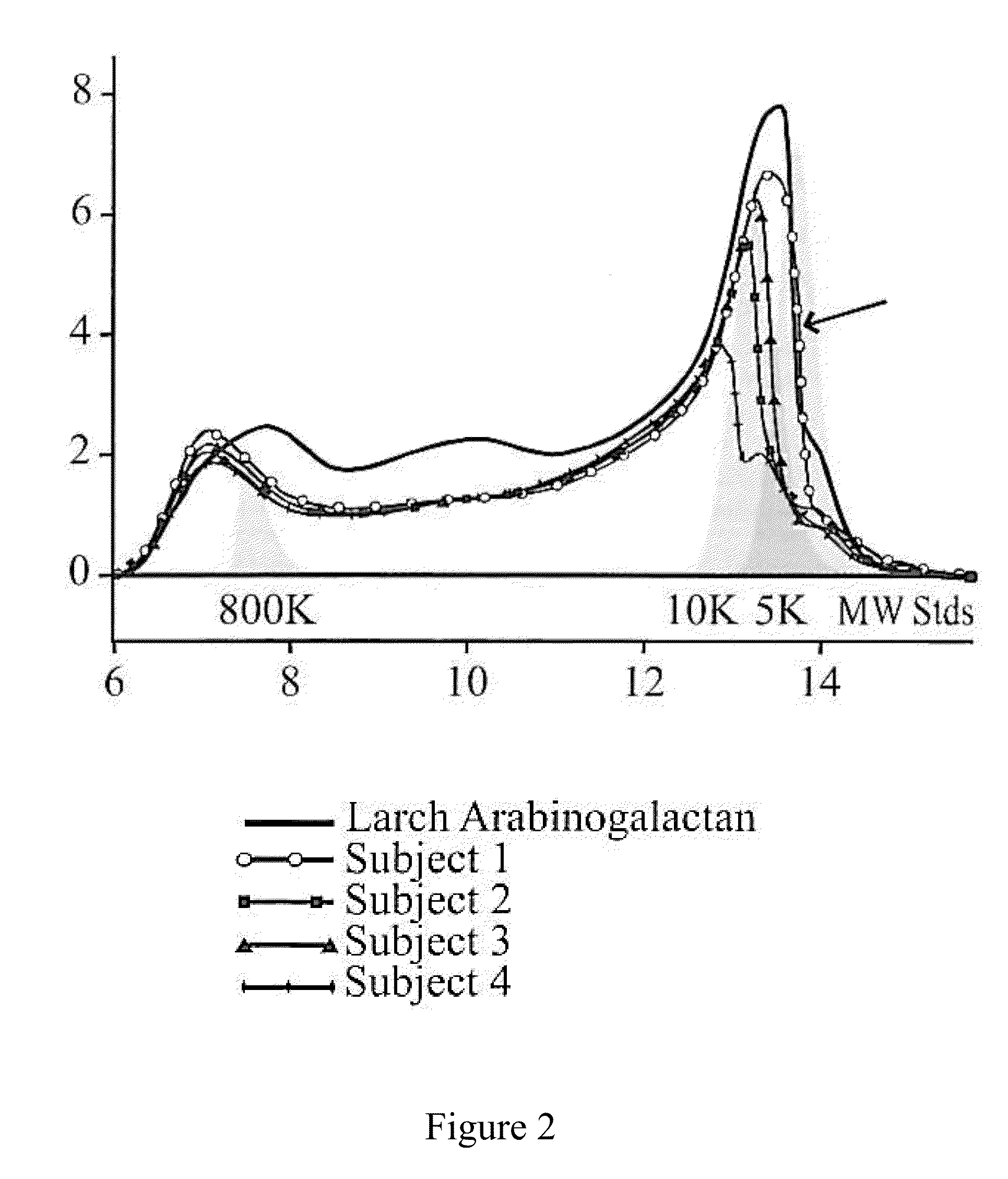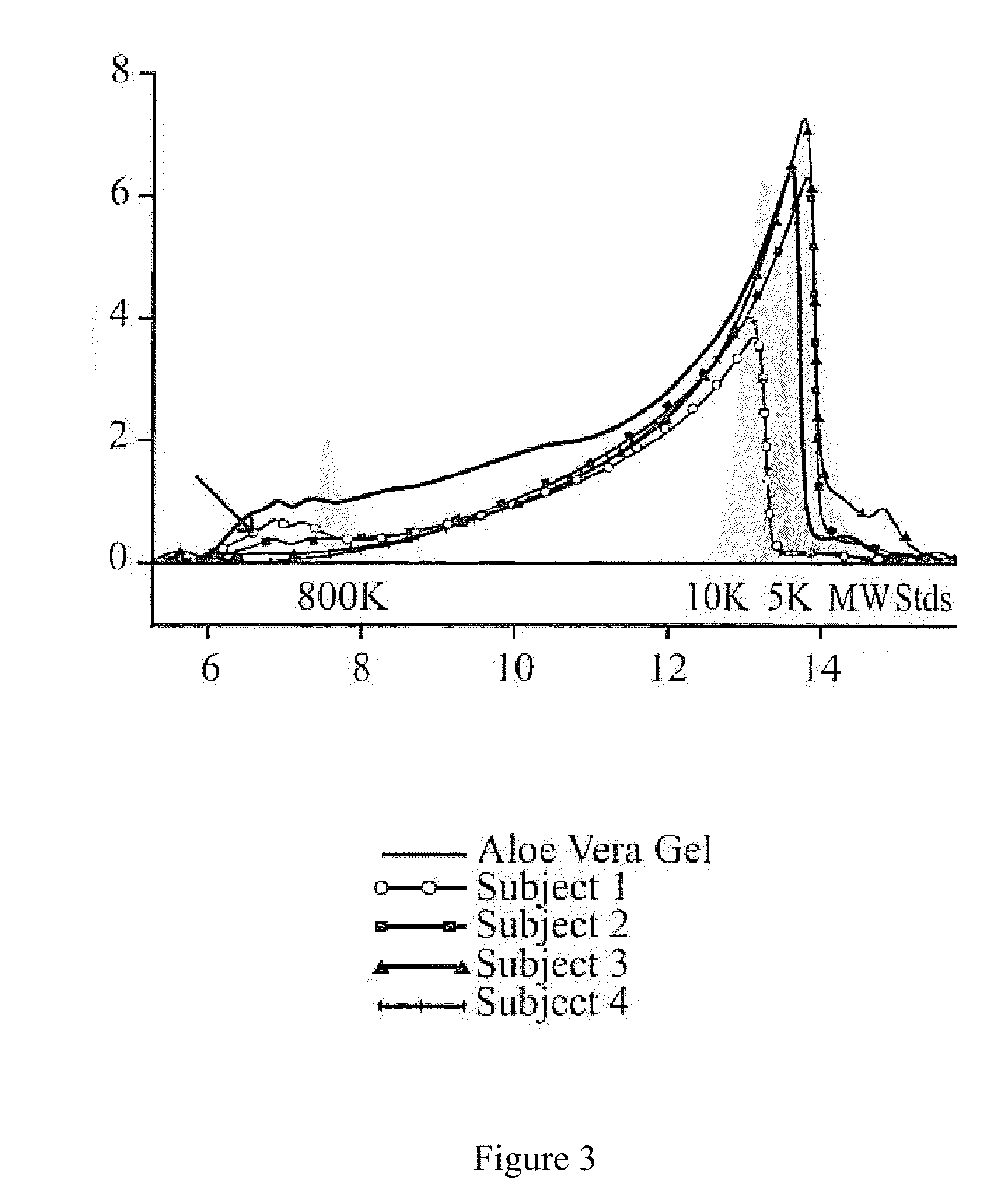Processing of natural polysaccharides by selected non-pathogenic microorganisms and methods of making and using the same
a technology of natural polysaccharides and non-pathogenic microorganisms, which is applied in the field of probiotic organisms, can solve the problems of affecting the development of healthy digestive flora, and the effectiveness of probiotic cultures that are ingested to compete against local organisms, and achieve the effect of preventing the growth of non-symbiotic or harmful species
- Summary
- Abstract
- Description
- Claims
- Application Information
AI Technical Summary
Benefits of technology
Problems solved by technology
Method used
Image
Examples
example 1
Selection of Probiotic Cultures for Enhanced Growth on Selected Polysaccharide Substrates
[0050]Different species and strains of bacteria, that are present within the human GI tract, have the ability to utilize different polysaccharide substrates. For example, in a study of 154 strains from 22 different species of Bifidobacterium, Peptostreptococcus, Lactobacillus, Ruminococcus, Coprococcus, Eubacterium, and Fusobacterium were surveyed for their ability to ferment 21 different complex carbohydrates. The common food polysaccharides starch (amylose) and amylopectin were fermented by the most bacterial strains in the survey. At least some strains in 7 of the 22 species surveyed were able to utilize amylose and / or amylopectin. Other polysaccharides such as D-galactosamine, dextran, gum karaya, fucoidan, alginate, carrageenan, chondroitin sulfate, hyaluronate, heparin, ovomucoid, and beef submaxillary mucin were not fermented by any of the strains tested. The other polysaccharides include...
example 2
Additional Agents for the Enhancement of Probiotic Organism Growth and Polysaccharide Utilization
[0128]Inclusion of additional agents, other than polysaccharides, which foster the growth of beneficial bacteria or inhibit the growth of competing bacteria, either in vivo or in vitro may be beneficial. Examples of these additional substances could include:
[0129](1) selective antibiotic substances, which inhibit the growth of gram-negative bacteria while having a lesser effect on gram-positive bacteria, such as Lactobacillus and Bifidobacteria;
[0130](2) selective antibiotic substances, which inhibit the growth of gram-positive bacteria while having a lesser effect on gram-negative bacteria, such as Bacterioides species;
[0131](3) substances which stimulate the growth of probiotic bacteria such as sub-bituminous humic substances, which have been used in animal feeds to stimulate the growth of beneficial bacteria;
[0132](4) substances, such as inorganic or organic acids and bases, which ch...
example 3
Compositions and Methods for Selecting and Making Probiotic-Processed Polysaccharides with or without Probiotics
[0134]Bacterioides thetaiotaomicron
[0135]A probiotic food or dietary supplement formulation comprising a natural polysaccharide(s) and viable cells of Bacterioides thetaiotaomicron.
[0136]A probiotic food or dietary supplement formulation comprising a natural polysaccharide(s) and viable cells of Bacterioides thetaiotaomicron and selected growth-promoting agents, which stimulate the growth of gram-negative anaerobes.
[0137]A method for producing bacterially-modified polysaccharides, oligosaccharides, disaccharides, and monosaccharides using Bacterioides thetaiotaomicron to effect enzymatic degradation of naturally occurring polysaccharides in a closed bioreactor system.
[0138]A method for producing bacterially-modified polysaccharides and oligosaccharides with immunological activity using Bacterioides thetaiotaomicron to effect enzymatic degradation of naturally occurring p...
PUM
| Property | Measurement | Unit |
|---|---|---|
| volume | aaaaa | aaaaa |
| volume | aaaaa | aaaaa |
| molecular weights | aaaaa | aaaaa |
Abstract
Description
Claims
Application Information
 Login to View More
Login to View More - R&D
- Intellectual Property
- Life Sciences
- Materials
- Tech Scout
- Unparalleled Data Quality
- Higher Quality Content
- 60% Fewer Hallucinations
Browse by: Latest US Patents, China's latest patents, Technical Efficacy Thesaurus, Application Domain, Technology Topic, Popular Technical Reports.
© 2025 PatSnap. All rights reserved.Legal|Privacy policy|Modern Slavery Act Transparency Statement|Sitemap|About US| Contact US: help@patsnap.com



